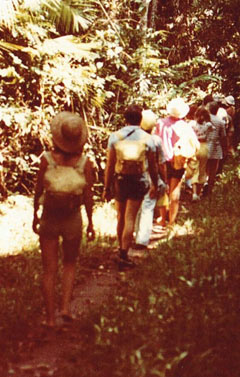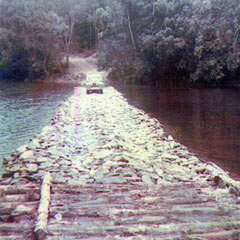The Daintree Blockade - a brief history
Plans to build a road along the coast had been on the agenda since the Cook Highway had opened in 1933, linking Mossman and Port Douglas to Cairns and markets to the south. By the 1960s the only part of the east coast of Australia not to be connected by road was a 32km stretch between Cape Tribulation and Bloomfield. It was known as the ‘missing link’ and had stumped locals, councillors and politicians for decades.
In 1968 a group of local farmers formed the Baileys Creek and Cape Tribulation Development League. The League set about proving that a road could be built along the coast. If the government wasn’t going to help them out, they’d build a track themselves. The path they chose mostly followed Kuku-Yalanji walking trails - the local Indigenous people had been walking the coast for centuries. The managed to push a track through, but due to mechanical problems and protests from a family who owned the last block at Cape Tribulation, a small section between the Cape and Emmagen Creek remained uncleared. In the following years the rest of the track became impassable.
Throughout the 1970s and early 1980s many people moved to the area to lead a sustainable, self-sufficient lifestyle. They had a different outlook than the pioneers who had cleared the rainforest since the 1930s: many became involved in the conservation of the region they now lived in. When subdivisions began carving up the rainforest into lots to be sold off, the ‘new settlers’ mobilised and became vocal in the opposition to further developments north of the Daintree River.
Scientific interest in the region had also grown. In 1971, the discovery of Idiospermum australiense, a plant thought to be extinct, confirmed what scientists were already beginning to determine: that the rainforests north of the Daintree River were some of the oldest on the planet. By 1983 the missing link had become a walking track that was gaining some renown. The need to conserve the rainforests north of the Daintree River, for scientific purposes and for the growing nature-based tourism market, was evident.

